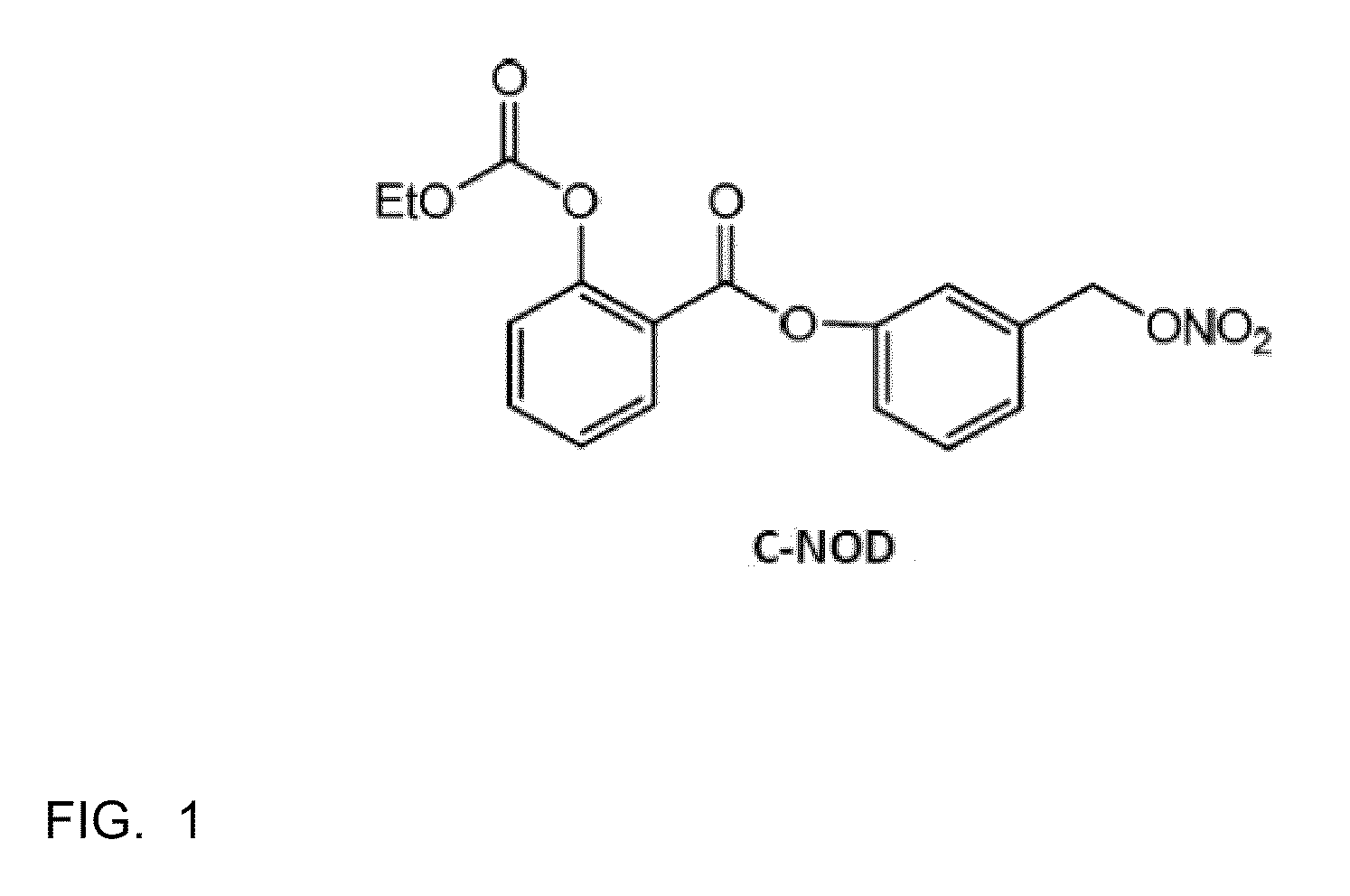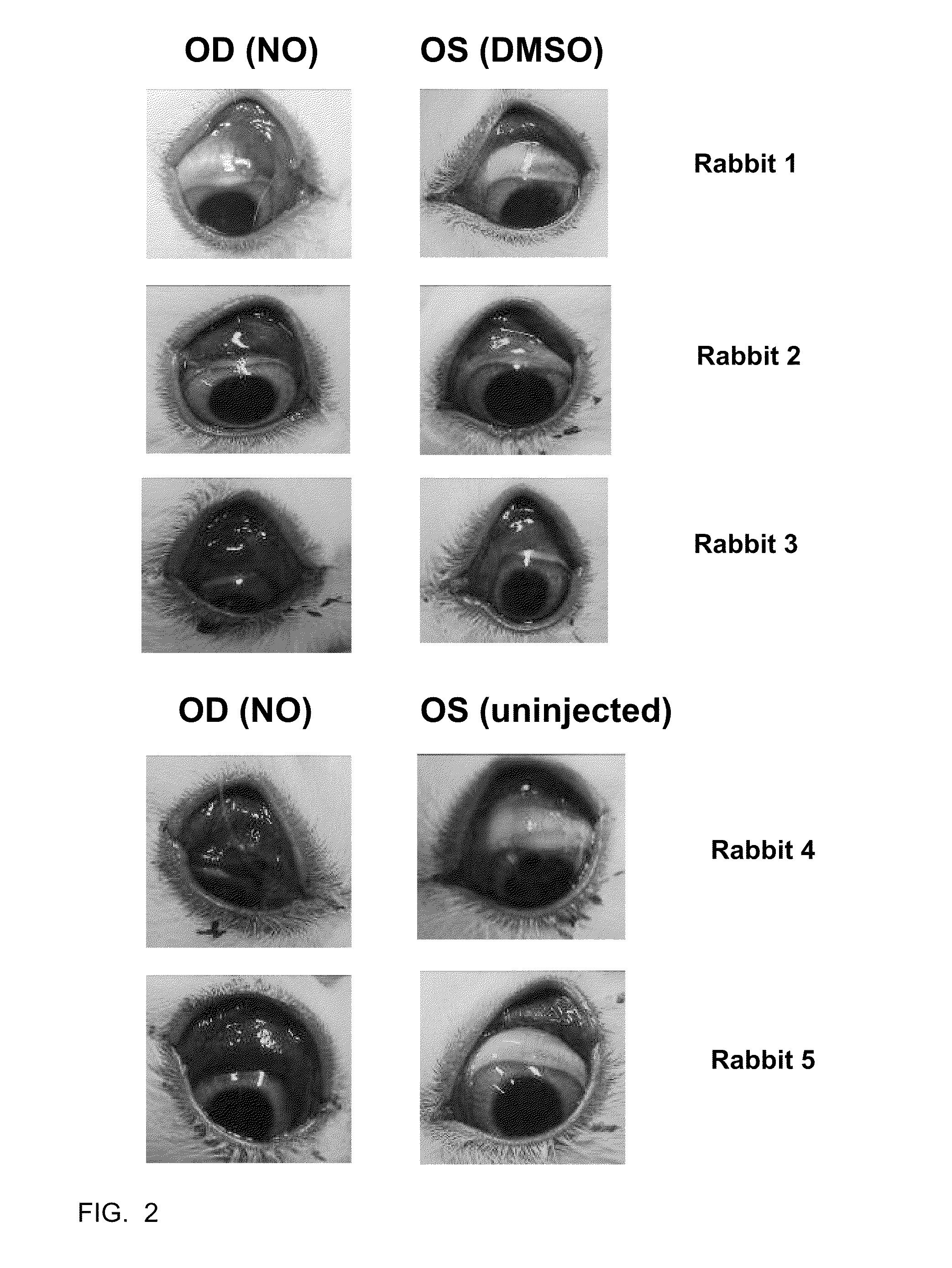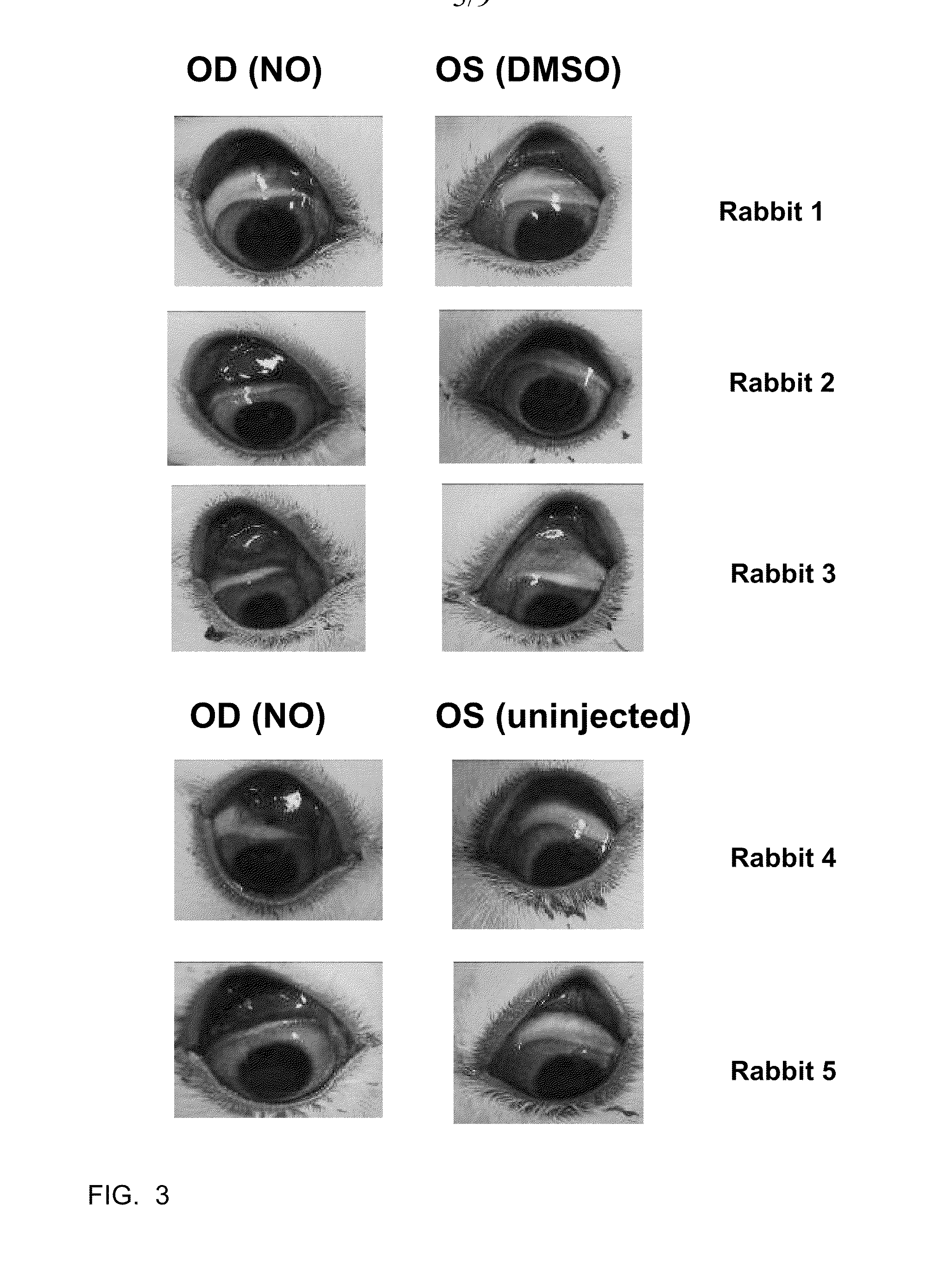Treatment of Ocular Surface Disorders by Increasing Conjunctival Vascular Permeability
a conjunctival vascular and vascular permeability technology, applied in the field of eye surface disorders, can solve the problems of frequent artificial tears and often difficult treatment of ded, and achieve the effect of increasing conjunctival vascular permeability and minimal or no inflammation
- Summary
- Abstract
- Description
- Claims
- Application Information
AI Technical Summary
Benefits of technology
Problems solved by technology
Method used
Image
Examples
example 1
Materials and Methods
[0039]The efficacy of C-NOD and other potential NO releasing compounds in promoting vascular permeability, and hence release of serum proteins onto the surface of the eye, was assessed in New Zealand White rabbits using two methods.
[0040]Method 1: Evans blue dye assay. Evans blue dye binds to albumin in the serum and its presence on the surface of the eye is an indicator of vascular permeability. Animals were anesthetized with 2-5% isofluorane gas administered via mask. The eyes were sterilized with 5% iodine (povidone iodine (HUMCO, Texarkana, Tex., USA) diluted to 5% in BSS (Alcon, Fort Worth, Tex., USA)) and 2-3 drops of 0.5% ophthalmic proparacaine (Alcon, Fort Worth, Tex., USA) was administered as a topical anesthetic. Right eyes (OD) received subconjunctival injections of 50 microliters of C-NOD in 100% DMSO. Left eyes (OS) received subconjunctival injections of 50 microliters of 100% DMSO. 40 mg / kg of Evans blue dye (Sigma-Aldrich, St. Louis, Mo., USA) wa...
example 2
[0053]In this prophetic example, a patient with dry eye who has persistent symptoms and prominent rose bengal staining despite treatment with artificial tears and punctual plugs is treated with a subconjunctival injection of a sustained release NOD formulation. Topical proparacaine is instilled and a pledget containing 4% lidocaine solution is used to further anesthetize the superotemporal bulbar conjuctiva. Next, a 0.1 cc injection of subconjunctival sustained release NOD formulation is administered to the anesthetized region. Nitric oxide is released over the next 3 months causing focal conjunctival vascular dilation that is hidden by the upper lid. Serum components leak from the conjunctival vessels in the treated region for the 3 months of sustained nitric oxide release. The patient notes decreased ocular irritation. Staining of the ocular surface with rose bengal is improved compared to pre-injection. After 3 months, a repeat injection of the sustained release NOD formulation i...
PUM
| Property | Measurement | Unit |
|---|---|---|
| vascular permeability | aaaaa | aaaaa |
| adhesive | aaaaa | aaaaa |
| adhesion | aaaaa | aaaaa |
Abstract
Description
Claims
Application Information
 Login to View More
Login to View More - R&D
- Intellectual Property
- Life Sciences
- Materials
- Tech Scout
- Unparalleled Data Quality
- Higher Quality Content
- 60% Fewer Hallucinations
Browse by: Latest US Patents, China's latest patents, Technical Efficacy Thesaurus, Application Domain, Technology Topic, Popular Technical Reports.
© 2025 PatSnap. All rights reserved.Legal|Privacy policy|Modern Slavery Act Transparency Statement|Sitemap|About US| Contact US: help@patsnap.com



